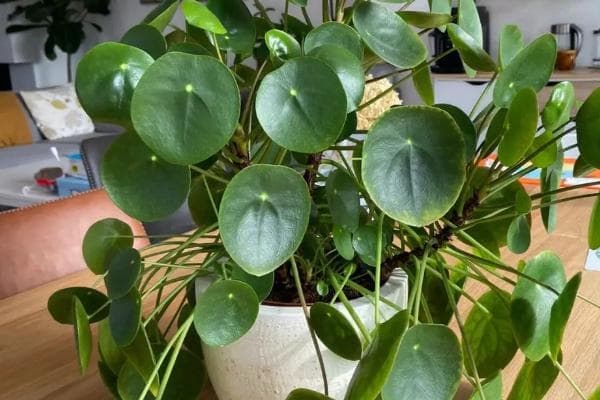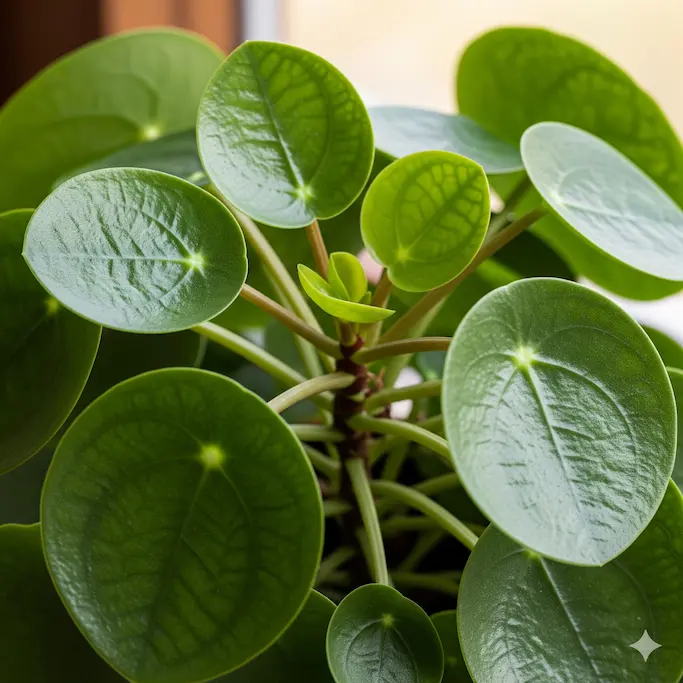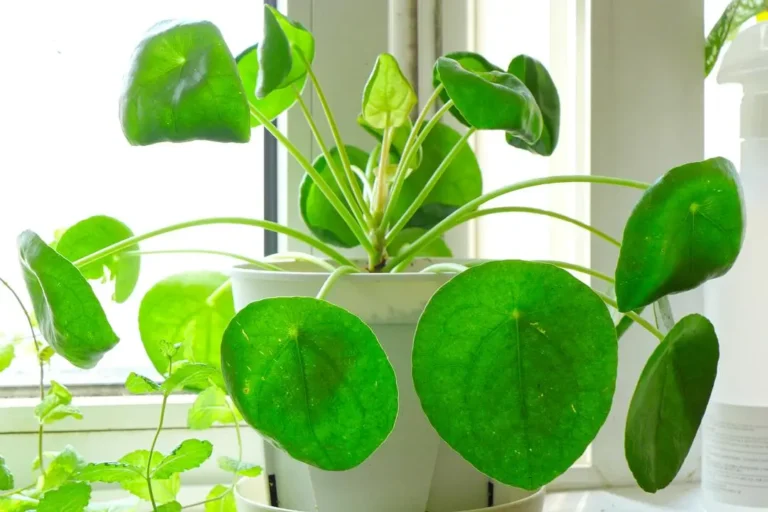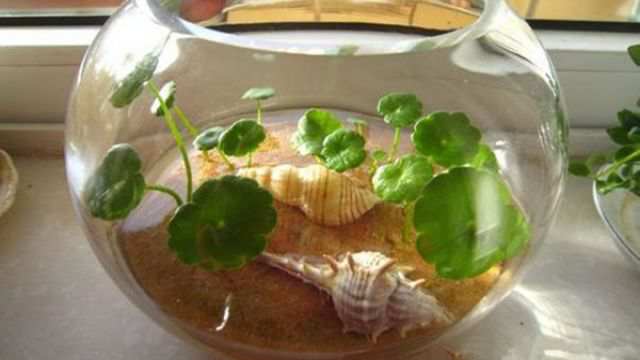Pancake Plant: Unique Foliage for Your Home
Pancake Plant, also known as Chinese Money Plant, Pilea peperomioides, or UFO Plant, is a small herbaceous plant that belongs to the genus Coldwater Flower in the family of Nettles. It is a small clumping plant with a unique and striking feature: flat, pancake-like leaves, which is why it is also called “Pancake Plant.” These flat, round leaves resemble small pancakes, making it a popular choice for indoor planting.
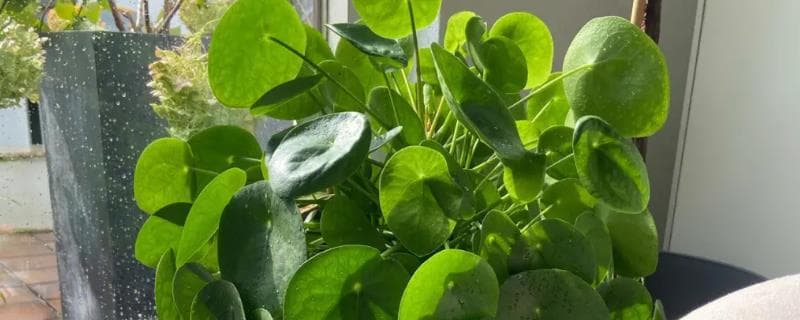
Characteristics of Pancake Plant
- Growing Habit: Pancake Plant is usually around 15 centimeters in height. It grows in clumps with upright and thick stems that are not branched. The stems are green in color and turn brownish if they dry out from lack of moisture.
- Leaf Blade: The leaf blade grows at the top of the stem and is fleshy and full, becoming paper-like if water is lacking. The leaves are rounded, with petioles that grow like shields and have shallow wavy edges.
- Flowering and Fruiting: It flowers from April to July, the flowers are small and grow one by one, opening like an umbrella. The fruiting period is from July to September, and the fruits are egg-shaped, rather flat, and covered with purplish-red bumps.
Where Pancake Plant Grows
Pancake Plant grows mainly in China’s Yunnan and Sichuan regions, mostly in shady places in forests at altitudes of 1,500 to 3,000 meters above sea level. It prefers a warm and humid environment and is also very shade-tolerant. It can grow normally with a small amount of sunlight, making it very suitable for planting at home and in the office. It is relatively cold hardy and can winter safely indoors in the south, but may suffer frost damage if the temperature falls below -4 degrees Celsius, causing the leaves to lose their luster or even fall off.
Value of Pancake Plant
- Ornamental Value: Pancake Plant has been popular in Europe since the early 20th century, where it quickly spread among plant enthusiasts due to its unique shape, beautiful posture, fast growth, and ease of propagation. If you are interested in learning more about how to propagate this plant, you can check out our detailed guide on Chinese Money Plant Propagation.It is suitable for a variety of climatic environments and is an excellent foliage plant for indoor and outdoor cultivation.
- Cultivation Methods:
- Soil: The best soil for potting Pancake Plant is loose, fertile, well-drained, and rich in humus. A good mix can be made from three parts humus, three parts garden soil, two parts river sand or furnace ash, and one part well-rotted organic fertilizer. Ensure good drainage by placing a layer of broken pottery or pebbles at the bottom of the pot.
- Light: Pancake Plant is shade-tolerant but also enjoys some sunlight. It thrives in diffused light. Too much direct sunlight or too much shade can cause the leaves to lose their luster. In winter, when temperatures are lower, it can benefit from full sunlight.
- Temperature: The optimal growth temperature for Pancake Plant is between 15 to 20 degrees Celsius. Keep it above 7 degrees Celsius during winter to prevent leaf drop and frost damage. In summer, temperatures above 30 degrees Celsius can cause growth to stagnate and leaves to fall off. Sudden temperature drops can cause discoloration and partial leaf drop. If frost damage occurs, the leaves may fall off, but if the stems are undamaged, the plant can recover and grow new leaves in the spring with proper care.
- Moisture: Pancake Plant likes water but is sensitive to waterlogging. Keep the soil consistently moist but not waterlogged. In winter, when temperatures drop below 12 degrees Celsius, reduce watering to prevent root rot. During the growing season, maintain soil moisture and mist the leaves regularly to create a humid environment.
- Fertilizer: Pancake Plant does not tolerate heavy or concentrated fertilizers. Apply diluted liquid fertilizer every two weeks during the growing season. Avoid fertilizing when temperatures are above 28 degrees Celsius or below 12 degrees Celsius. Too much nitrogen can cause excessive leaf growth and weak stems, while concentrated fertilizers can damage the roots.
- Pest and Disease Control: Common issues include anthracnose and mealybugs. Treat anthracnose with fungicides like carbendazim or mancozeb. Mealybugs can be controlled with insecticides like malathion or imidacloprid. Regularly inspect the plant for signs of disease or pests and treat promptly to prevent spread.
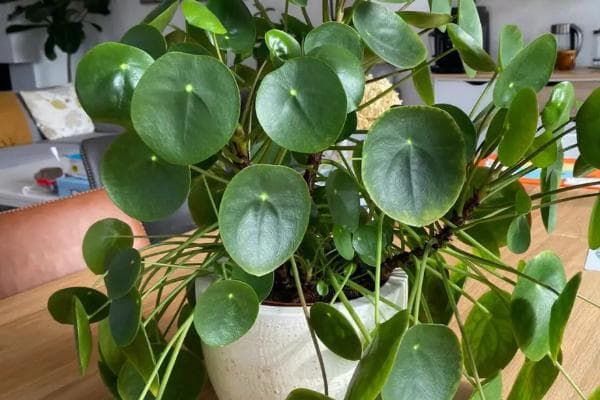
Pancake Plant is a versatile and attractive addition to any indoor garden. Its unique, flat leaves and easy-care nature make it a favorite among plant enthusiasts. With the right care, this plant can thrive in a variety of environments, adding a touch of greenery and beauty to your home or office.
